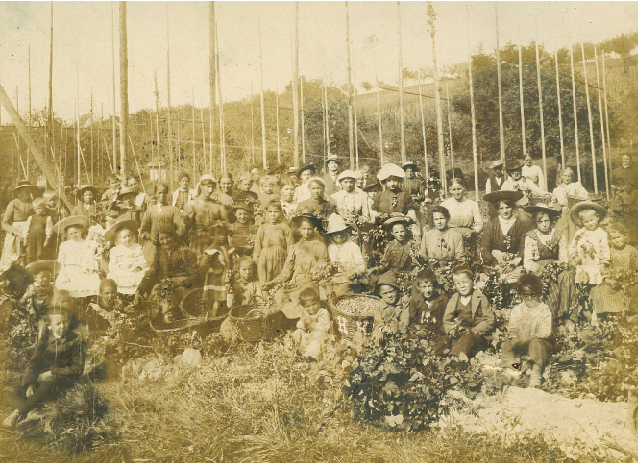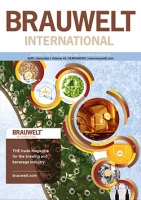Lacing is an important visual attribute of beer. The interaction of iso-alpha acids and protein in beer is responsible for lacing. One can improve the lacing of beer by increasing the concentrations of iso-alpha acids in beer, however, this will cause an increase in beer bitterness. In our February 2014 Newsletter, we mentioned that if one isolates alpha acids from CO2 hop extract and adds it to beer, post fermentation, one can dramatically improve foam stability of beer at concentrations as low as 3 to 5 ppm. Alpha acids added to beer at these same concentrations also enhances the lacing of beer.
One of the long term issues the malt producers and brewers deal with is contamination of barley and malt with Fusarium mould. Fusarium sp. contributes to beer gushing, formation of red grains, production of several carcinogenic toxins and other negative phenomenons. Different methods are used to reduce Fusarium sp. growth but none of them is fully effective. This presentation describes a concept with Chlorine dioxide (ClO2) added during steeping and germination of barley. Laboratory, semi industrial as well as industrial trial proved functionality of ClO2 application on malt during steeping and germination to push back Fusarium sp..
When calculating the transfer rate of geraniol in dry hopped beers based solely on the initial value in hops, there are tremendous fluctuations of between about 40% and over 200%. Some varieties, including Cascade, Hallertau Blanc and Polaris, contain considerable amounts of geranyl acetate in addition to geraniol. However, since no trace of geranyl acetate can be found in the beer, even at high dosages, it can be concluded that at least under these conditions (dry hopping before maturation and storage) geranyl acetate is hydrolyzed and geraniol is released. Including the dosage of geranyl acetate into the calculation of the transfer rates, this yields values of 36 % to 62%, a variation clearly within the limits of error analysis.
BrewingScience - Monatsschrift für Brauwissenschaft, 67 (March/April 2014), pp. 60-62
Although foam in the finished beer is an important quality characteristic, foam formation during the manufacturing process can lead to a variety of problems, such as the fouling of machine parts and the losses of valuable compounds in the beer. In addition to numerous methods for processing, technological application of antifoam products can help to control foam formation or to reduce it. Therefore, the focus of this research was to test an antifoam product based on silicone, as well as two hop-based products and compare them with regard to their effects on various parameters, like cleanability and their effect on the resulting product.
During hop storage secondary metabolites, primarily bitter acids, terpene hydrocarbons and terpenoids, undergo qualitative and quantitative changes. One reaction that influences both – bitter properties and aroma – is the release of extremely flavour active short chain monocarboxylic acids by cleavage of the acyl-side chain of bitter substances. Short chain acids exhibit very intense unpleasant cheesy, sweaty, and rancid smells, however they are key precursors of highly positive flavourings of late hopped beer.
Producing high-modified malt within short malting procedures due to higher temperatures can be a major advantage for the malting industry. At this, the malt kernel’s cytolytic and proteolytic modifications are the most important quality parameters. In literature, steeping and germination regimes with low temperatures between 12 and 17 °C during long process times up to 8 days including kilning are recommended. The majority of these recommendations were given decades ago. Economical reasons have led to studies for
The widespread good reputation of Bavarian beer goes right back to the Bavarian Purity Law of 1516. This was one of the first ordinances relating to quality in the food area. In terms of quantity, brewing liquor is the most important raw material in beer production. Water components – depending on type and composition – have a crucial influence on the resulting beer type. This also applies to König Ludwig Schlossbrauerei Kaltenberg. The brewery has installed a complete reverse osmosis system, ensuring consistent brewing liquor quality, based on information presented in Part 1 of this article series (BRAUWELT International no. 1, 2014, pp. 30-41). The compact system replacing existing units is essentially more manageable, its design is simpler and it uses less energy and is more environmentally compatible.
The original goal of the Alsatian hop breeding program was to develop a hop with higher and more consistent alpha acids than Strisselspalt, yet having the same bittering and aroma profile. The selection Aramis is believed to have achieved this goal. Triskel, on the other hand, is a selection with a bitter profile similar to Aramis, but with a distinct and sophisticated orange/citrus/honey aroma unique in commercial hops.
One of the long-term issues that malt producers and brewers deal with is contamination of barley and malt with Fusarium mould. Fusarium sp. contributes to beer gushing, formation of red grains, production of several carcinogenic toxins and other negative phenomena. Different methods are used to reduce Fusarium sp. growth, but none of them are fully effective. This article describes a method using chlorine dioxide (ClO2) which is added during the steeping and germination of barley.
Between September 25 and 27, 2014, drink technology India and International PackTech India will be taking place in parallel for the third time. In the Bombay Convention & Exhibition Centre these two trade shows will be presenting solutions for the international beverages and food sector, as well as for the packaging, packaging-print and processing industry. Organized by Messe München and Messe Düsseldorf, this strong event duo is the biggest business platform for the beverages, food and packaging sector in India.
Tettnang is a town near Lake Constance, counting almost 19,000 inhabitants. Its landscape is dominated by hop yards, visible from afar, hops being “the most veteran global player” in this town, to describe the Green Gold of the Montfort town in the words of Tettnang’s mayor Bruno Walter. Tettnang’s fame as a hop growing centre now reaches far beyond the regional borders. The fine aroma and the subtle bitterness give the beers an unmistakable character and each sip provides a taste of the unique landscape between the northern banks of Lake Constance and Allgäu.



